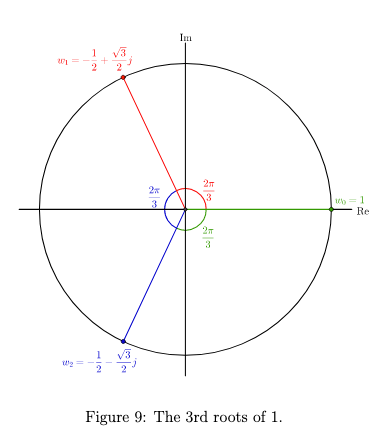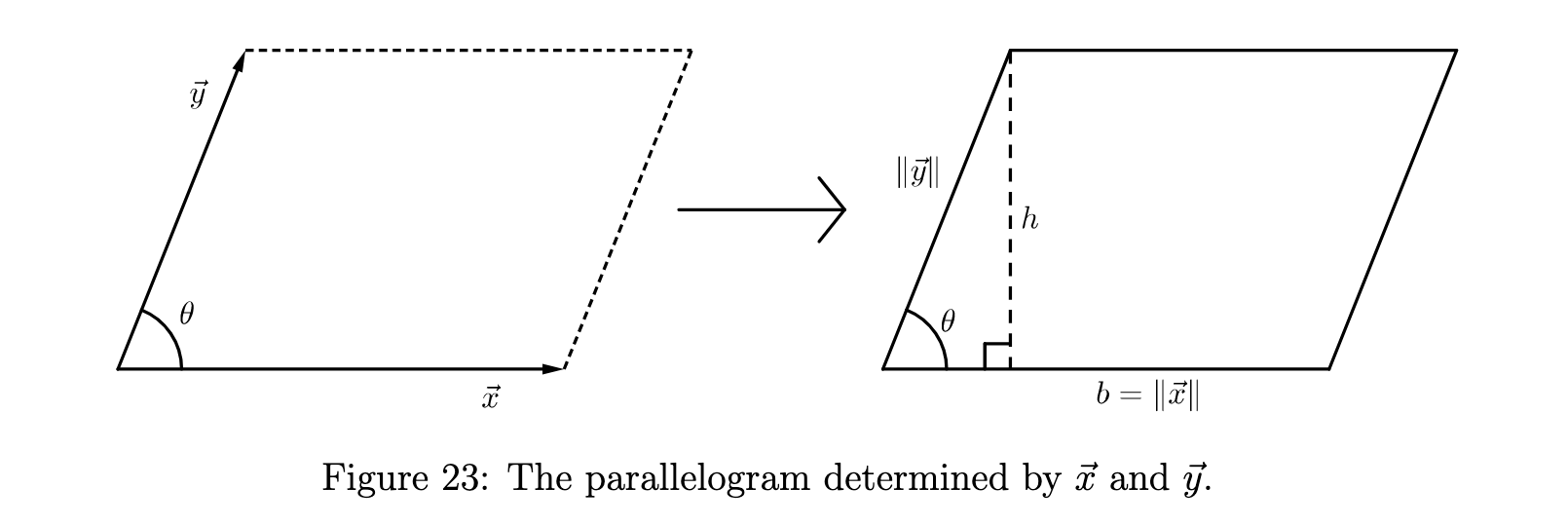Midterm Review
Properties of Conjugates
Properties of Modulus
- !!!
Powers of Complex Numbers
DeMoivre's Theorem (DMT)
The exponent of a complex number in polar form is:
For
For the integer
Case 1:
Let
Base case: For
LS =
RS =
Inductive step
Let
Assume the inductive hypothesis,
We wish to prove
So the result is true for
Case 2:
(See Pythagorean identities, Symmetry)
Complex nth Roots Theorem (CNRT)
The
For

These roots will form an n-regular polygon
Let
(See Set Builder Notation)
We will prove that
Forward direction:
Let
Then, using DeMoivre's Theorem, we obtain
(See periodicity)
Thus we conclude that
Backward direction:
Assume that
Then, writing the equation
where we have used DMT on the left side.
How, two complex numbers in polar form are equal if and only if their moduli are equal, and their arguments differ by an integer multiple of
Thus, from the equation above we obtain
Hence, for some
Now, dividing
for some
Substituting
We conclude that
Powers of Complex Numbers
DeMoivre's Theorem (DMT)
The exponent of a complex number in polar form is:
For
For the integer
Case 1:
Let
Base case: For
LS =
RS =
Inductive step
Let
Assume the inductive hypothesis,
We wish to prove
So the result is true for
Case 2:
(See Pythagorean identities, Symmetry)
Complex nth Roots Theorem (CNRT)
The
For

These roots will form an n-regular polygon
Let
(See Set Builder Notation)
We will prove that
Forward direction:
Let
Then, using DeMoivre's Theorem, we obtain
(See periodicity)
Thus we conclude that
Backward direction:
Assume that
Then, writing the equation
where we have used DMT on the left side.
How, two complex numbers in polar form are equal if and only if their moduli are equal, and their arguments differ by an integer multiple of
Thus, from the equation above we obtain
Hence, for some
Now, dividing
for some
Substituting
We conclude that
Euler's Formula
For
We can sorta prove this with a Taylor Series:
Euler and complex numbers:
Euler noticed that this follows the same pattern as the derivatives of sine/cosine (i.e as you take more derivatives, it "cycles" through).
which is Euler's Formula!
Note that we got the values for
Properties of Norms
Properties of Dot Products
- !!!
Complex Inner Product
Let
Complex Inner Product
Let
Cross Product
Only defined in 3-space, produces a vector perpendicular to
Given
Recall that the determinant is the area of a parallelogram. That means the cross-product is also the area of a parallelogram (see below).
For any 2 non-zero vectors in 3-space, if

We see that
And the area of a triangle is calculated as half the area of a paralellogram
Volume of a Parallelepiped:
Dot product the cross product VECTOR
Hand Rule
The resulting direction of
The left hand rule is more "intuitive" as the first vector is the bottom finger, while the right hand needs to mimic the left hand by swapping fingers.
Lagrange Identity
Where
Cross Product Order
What this means:
The same applies to the rest of the coordinate systems.
